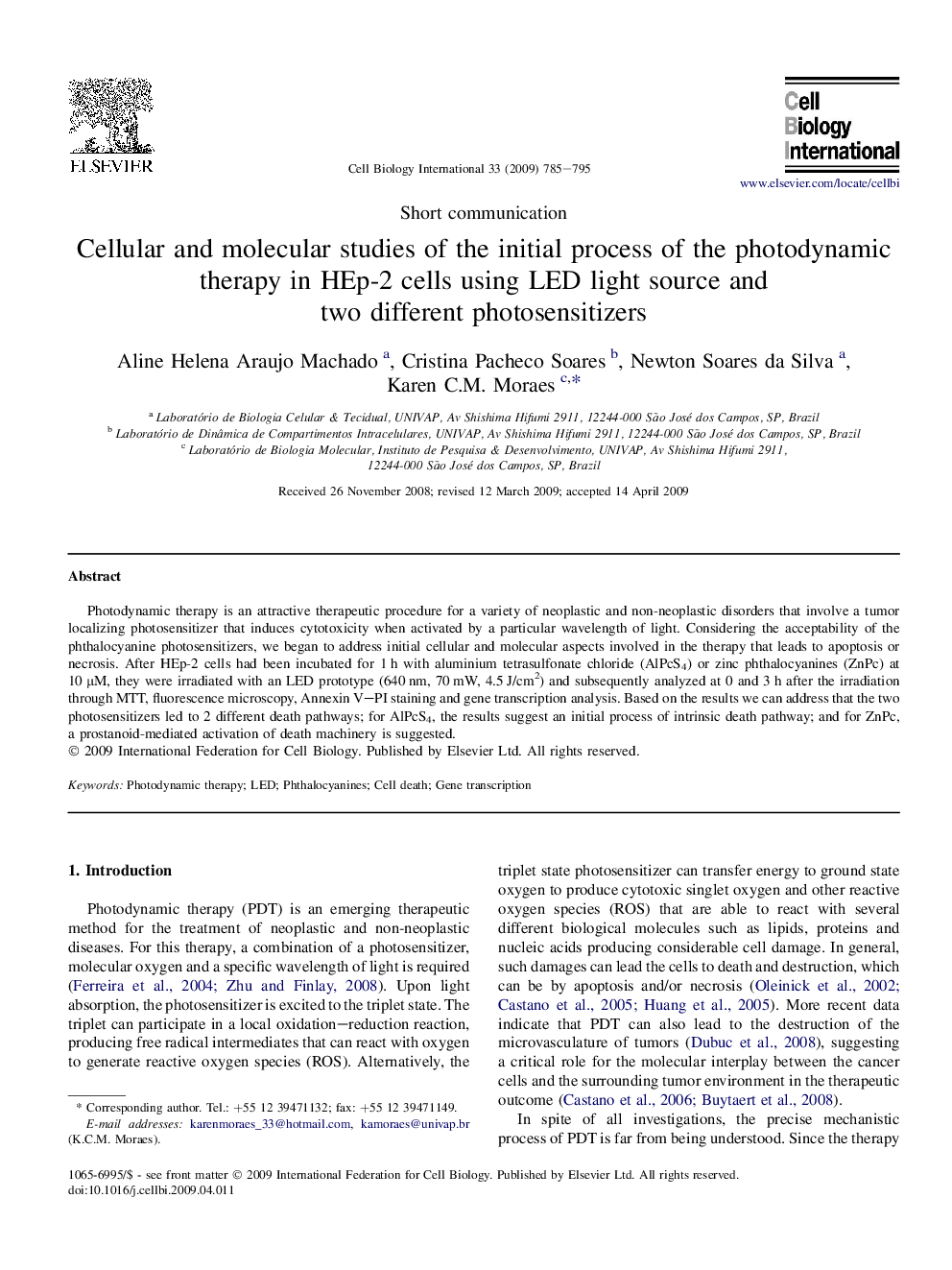| Article ID | Journal | Published Year | Pages | File Type |
|---|---|---|---|---|
| 2067132 | Cell Biology International | 2009 | 11 Pages |
Abstract
Photodynamic therapy is an attractive therapeutic procedure for a variety of neoplastic and non-neoplastic disorders that involve a tumor localizing photosensitizer that induces cytotoxicity when activated by a particular wavelength of light. Considering the acceptability of the phthalocyanine photosensitizers, we began to address initial cellular and molecular aspects involved in the therapy that leads to apoptosis or necrosis. After HEp-2 cells had been incubated for 1 h with aluminium tetrasulfonate chloride (AlPcS4) or zinc phthalocyanines (ZnPc) at 10 μM, they were irradiated with an LED prototype (640 nm, 70 mW, 4.5 J/cm2) and subsequently analyzed at 0 and 3 h after the irradiation through MTT, fluorescence microscopy, Annexin V-PI staining and gene transcription analysis. Based on the results we can address that the two photosensitizers led to 2 different death pathways; for AlPcS4, the results suggest an initial process of intrinsic death pathway; and for ZnPc, a prostanoid-mediated activation of death machinery is suggested.
Related Topics
Life Sciences
Biochemistry, Genetics and Molecular Biology
Biophysics
Authors
Aline Helena Araujo Machado, Cristina Pacheco Soares, Newton Soares da Silva, Karen C.M. Moraes,
